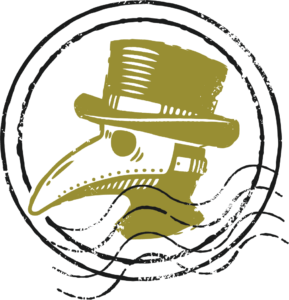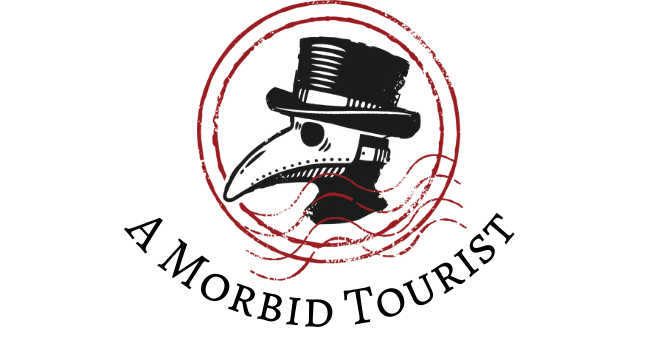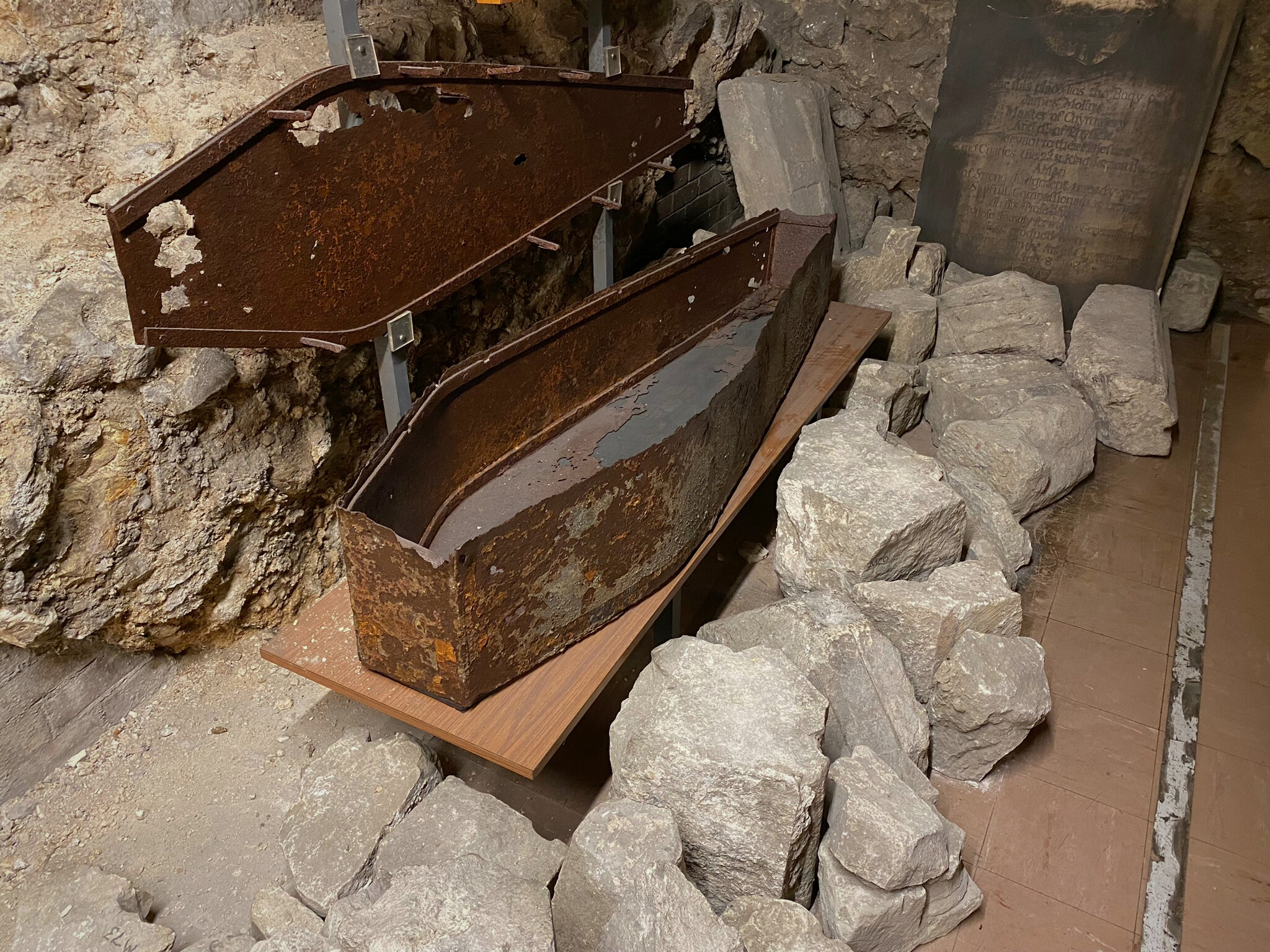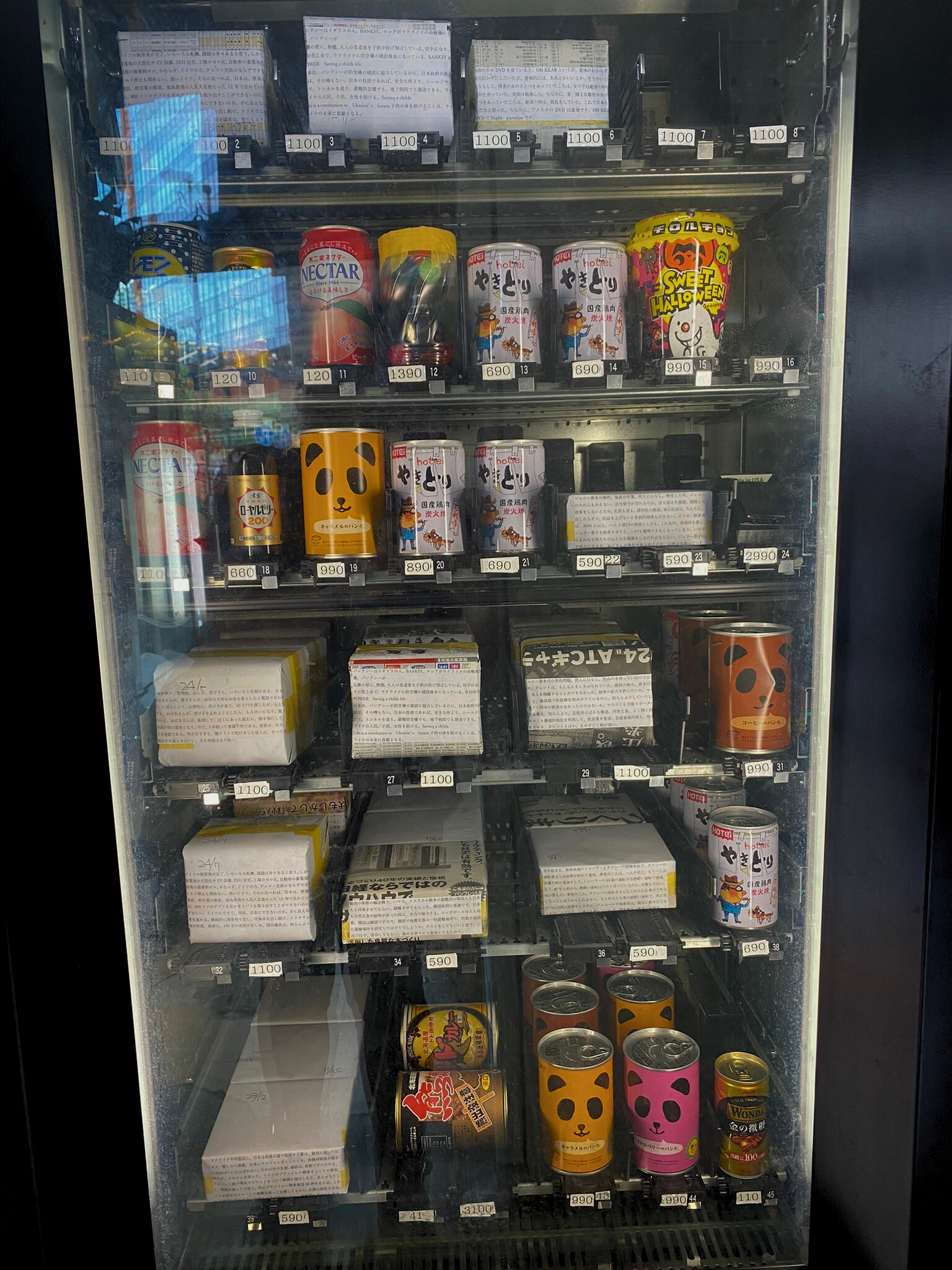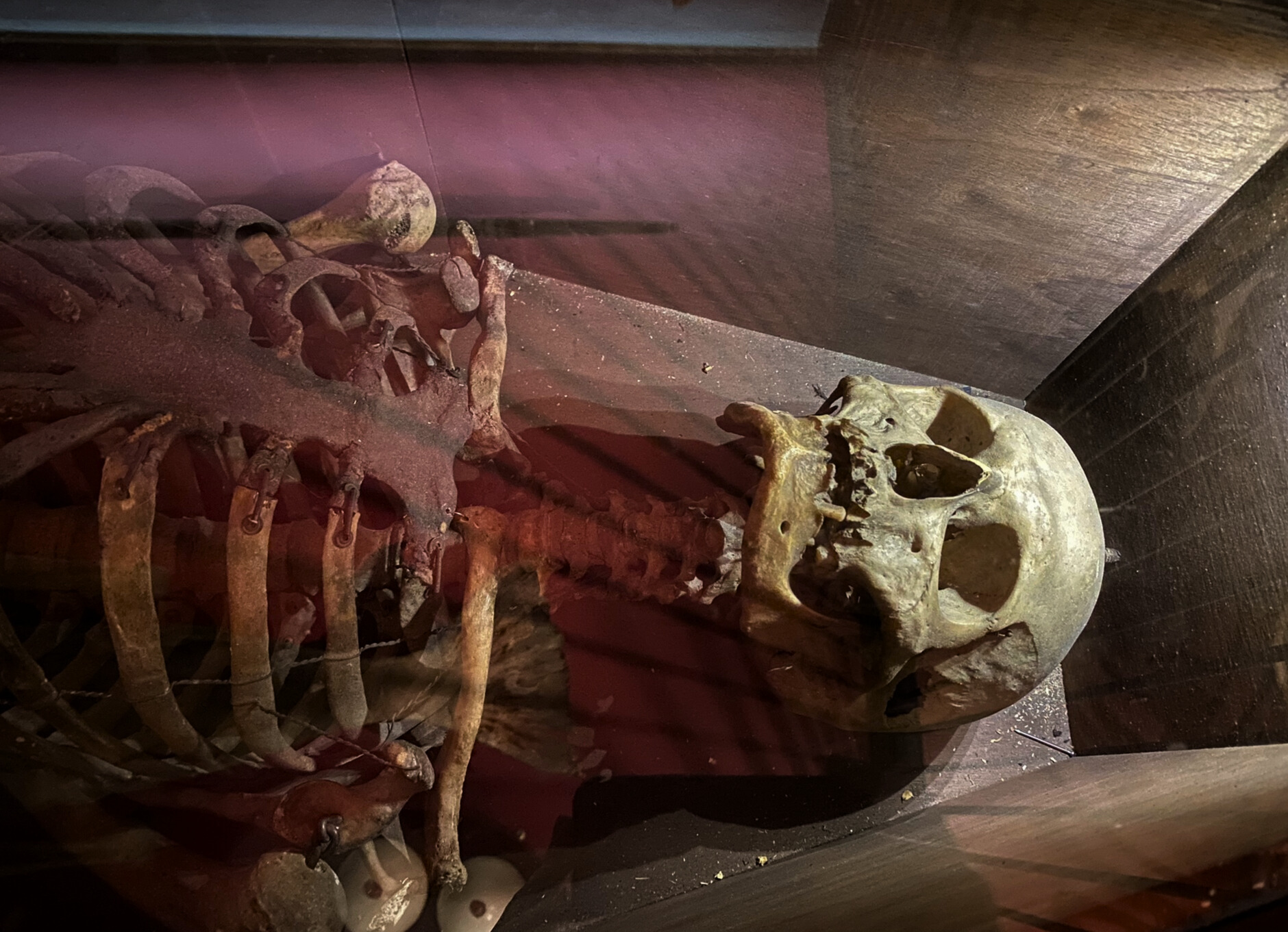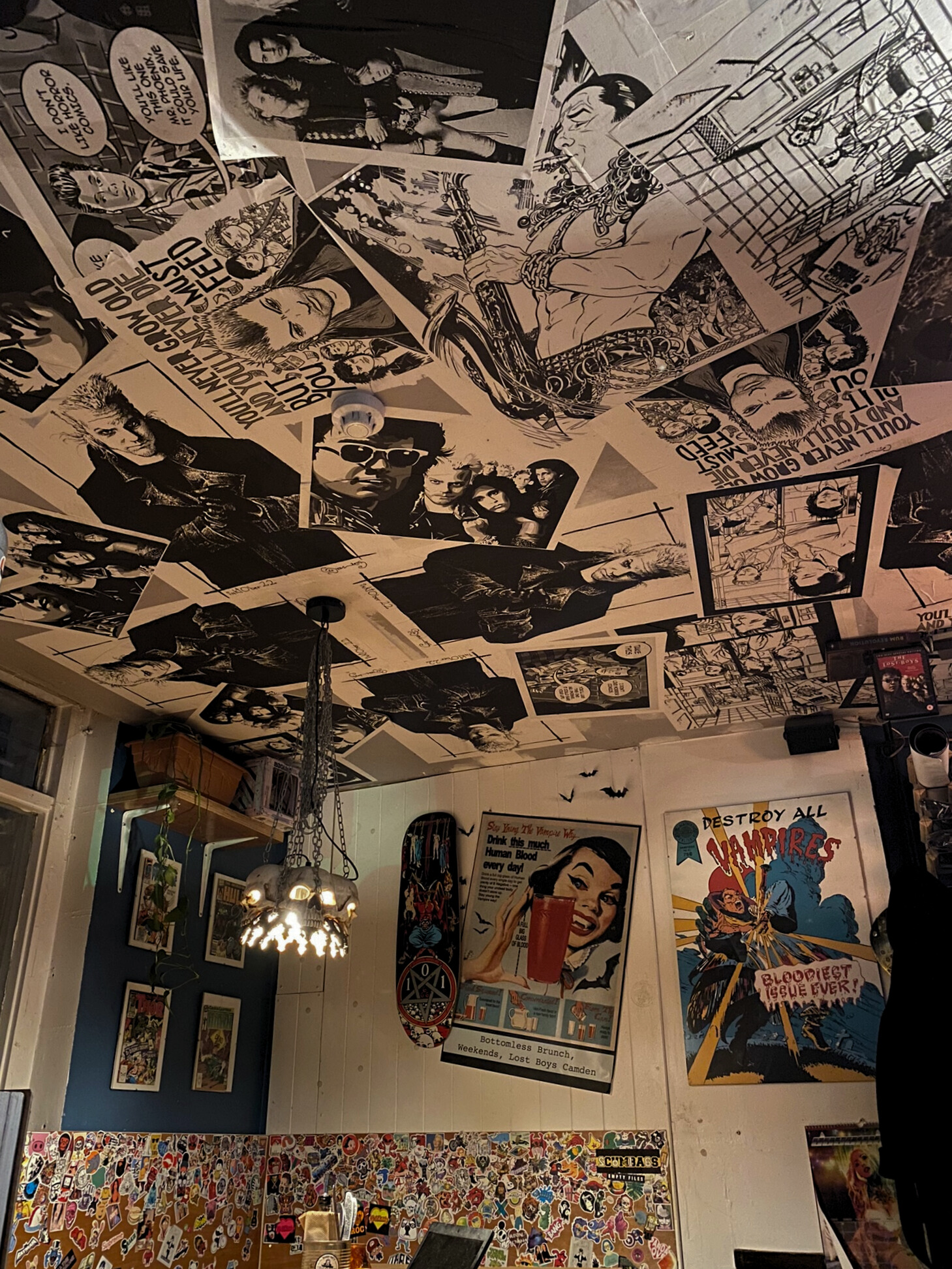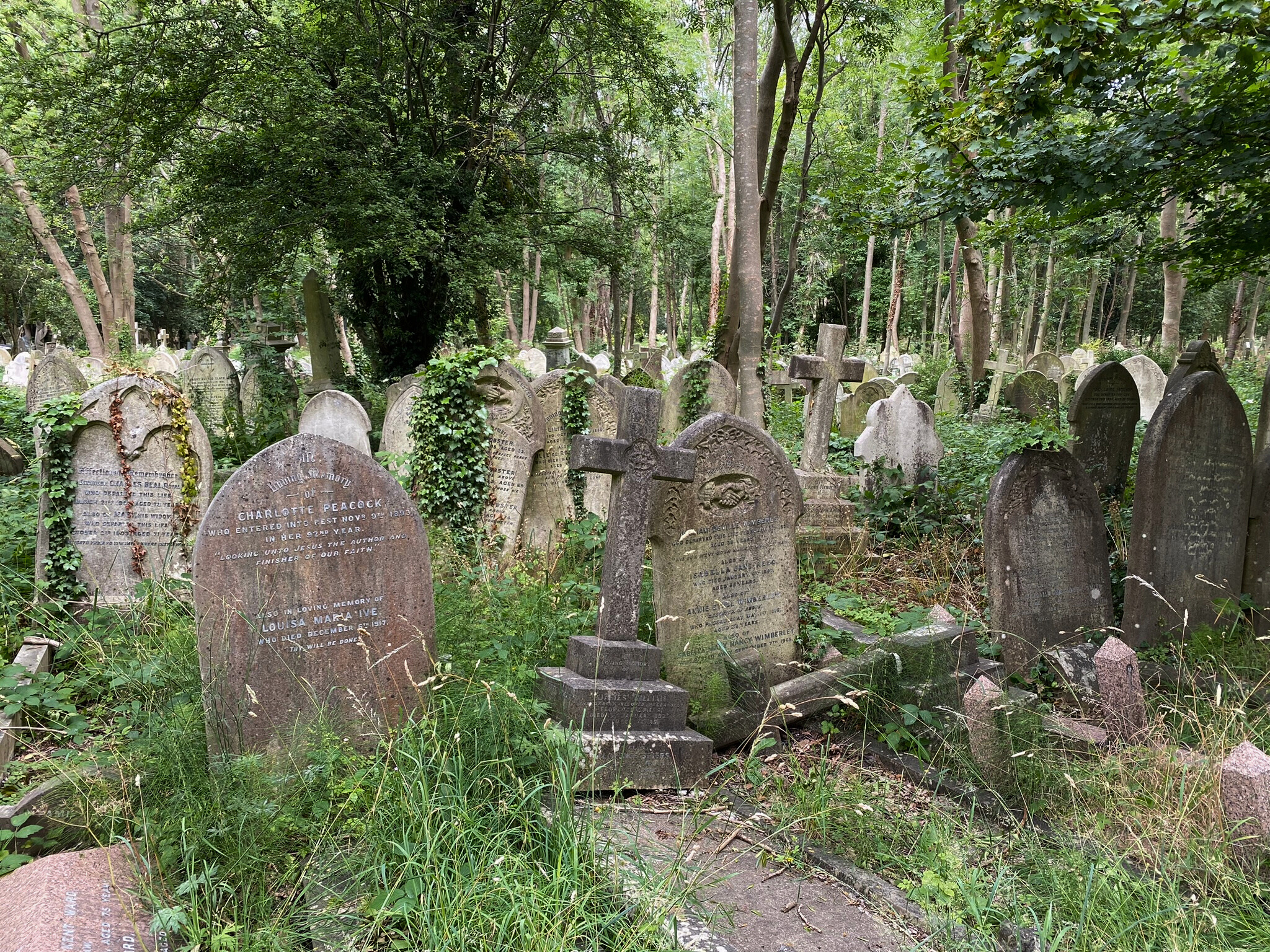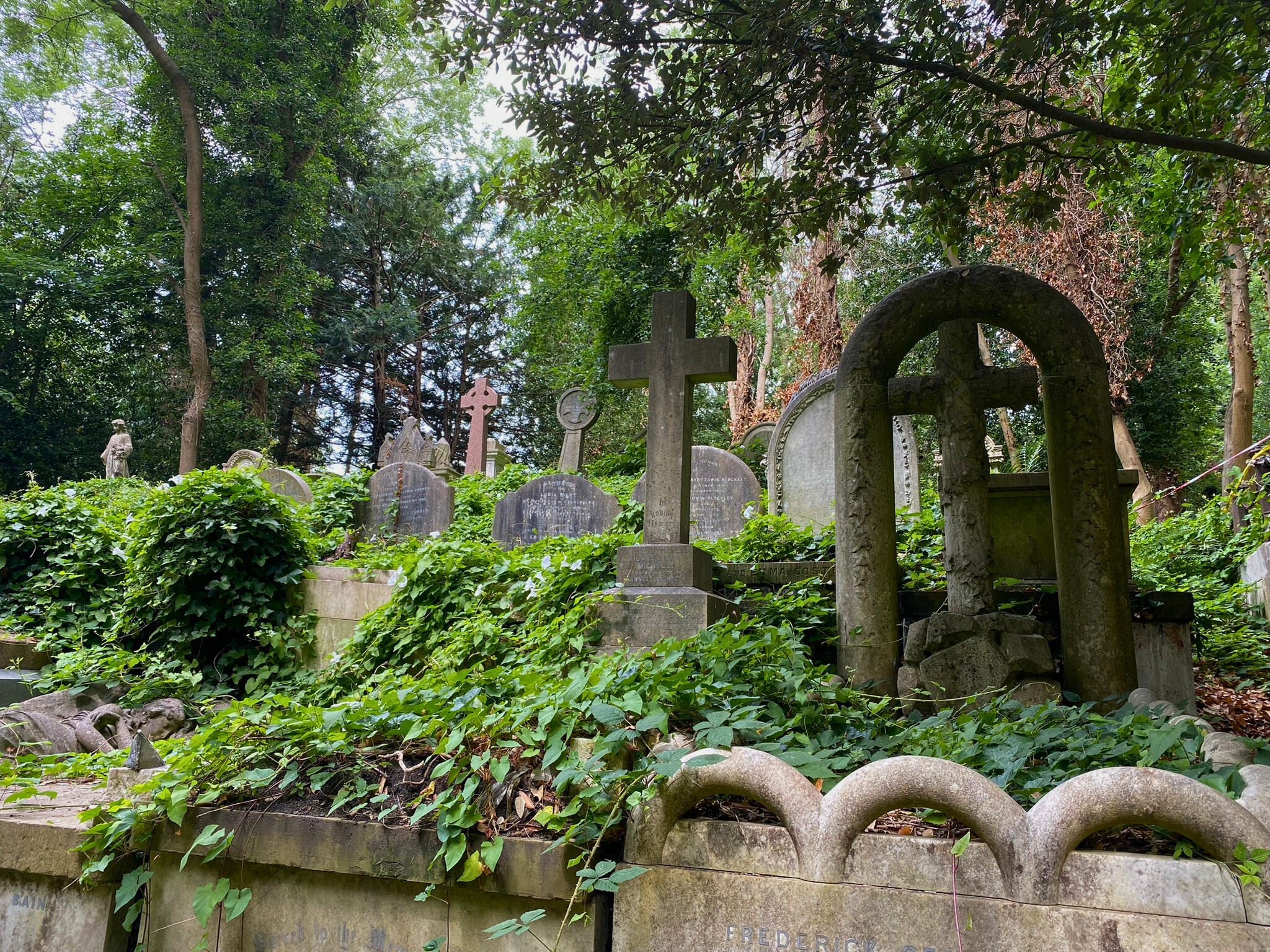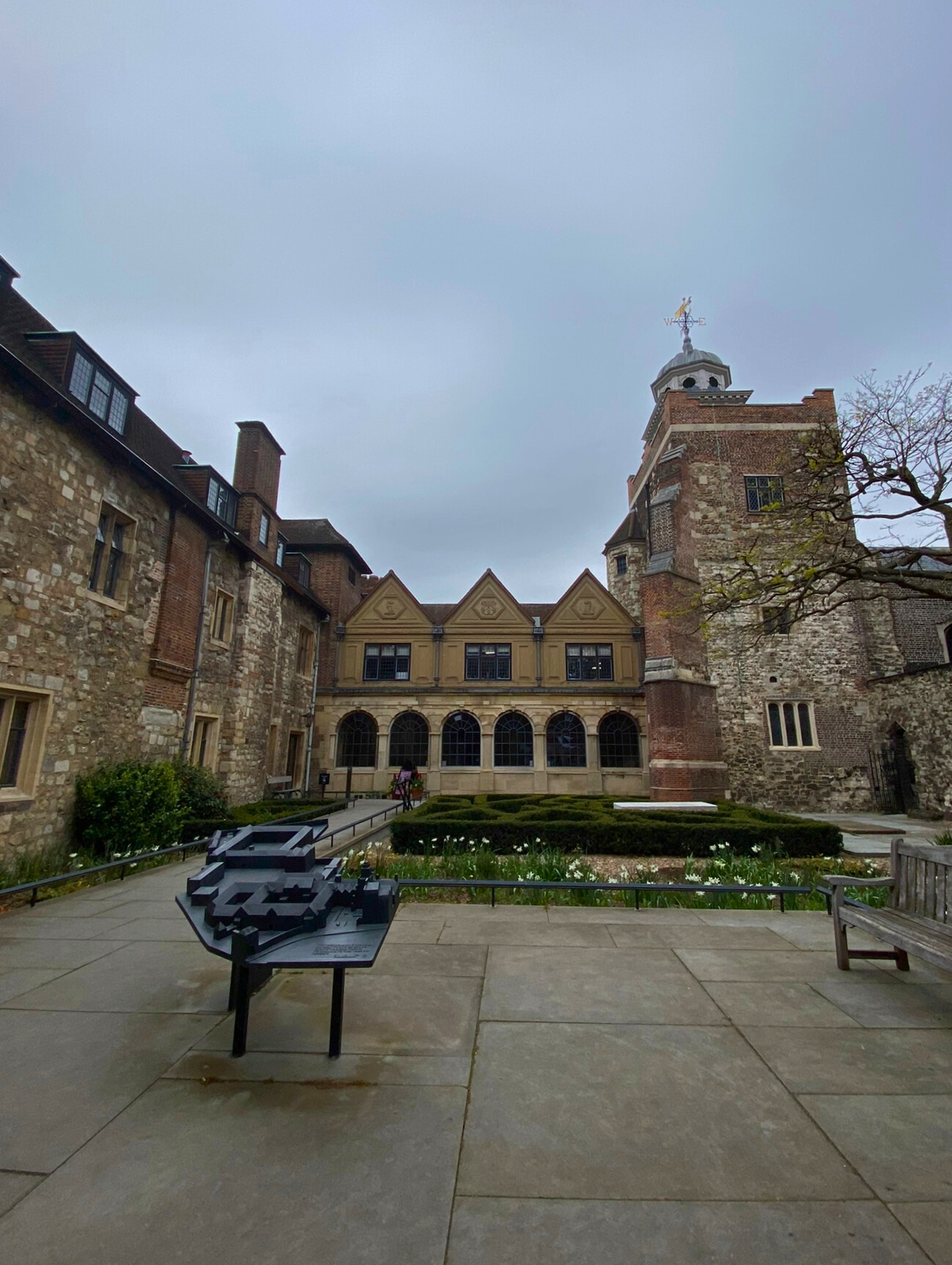The Viktor Wynd Museum
of Curiosities, Fine Art & UnNatural History
The Viktor Wynd museum had been on my radar for a little while, as it appears on many lists of odd museums and sites like Atlas Obscura (an indispensable source for finding weird places, by the way). What really motivated me to go in the end was when a friend of mine visited and told me I would love it. “It’s very….. you.” he said.
I don’t get to go back to London very often (too expensive, yo) but – the next time I managed to visit the capital – I made sure to put the museum at the top of my list.
This one’s for all of you curiosity collectors and lovers of oddities.
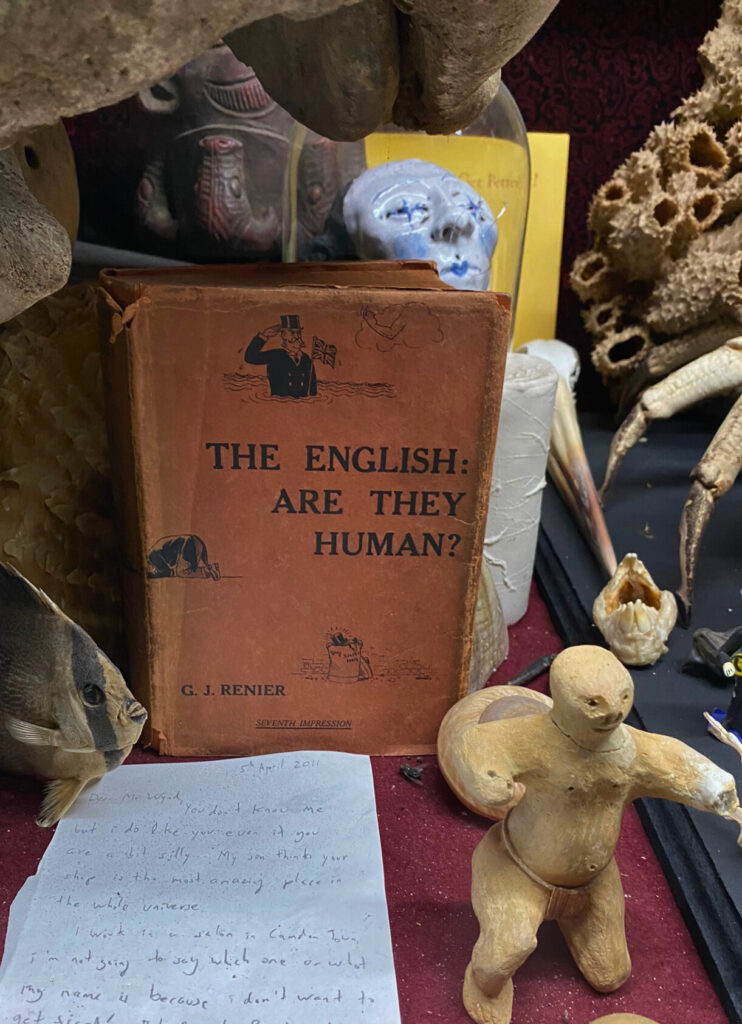
The Elusive Curator
Founded in 2015 by Viktor Wynd and The Last Tuesday Society, the Viktor Wynd Museum of Curiosities, Fine Art & UnNatural History is described as a Gesamtkunstwerk (the Germans coming through with an excellent word to describe visual art that uses all forms at once – or tries to), a cabinet of curiosities, and a look into the weird and wonderful mind of Viktor.
There isn’t actually a tonne of information about Viktor Wynd on the internet, which makes him all the more interesting to me. He’s primarily a pataphysicist (defined as ‘intricate and whimsical nonsense intended as a parody of science’) but is also an artist, an academic, and a hoarder of all things weird, revolting, or unusual.
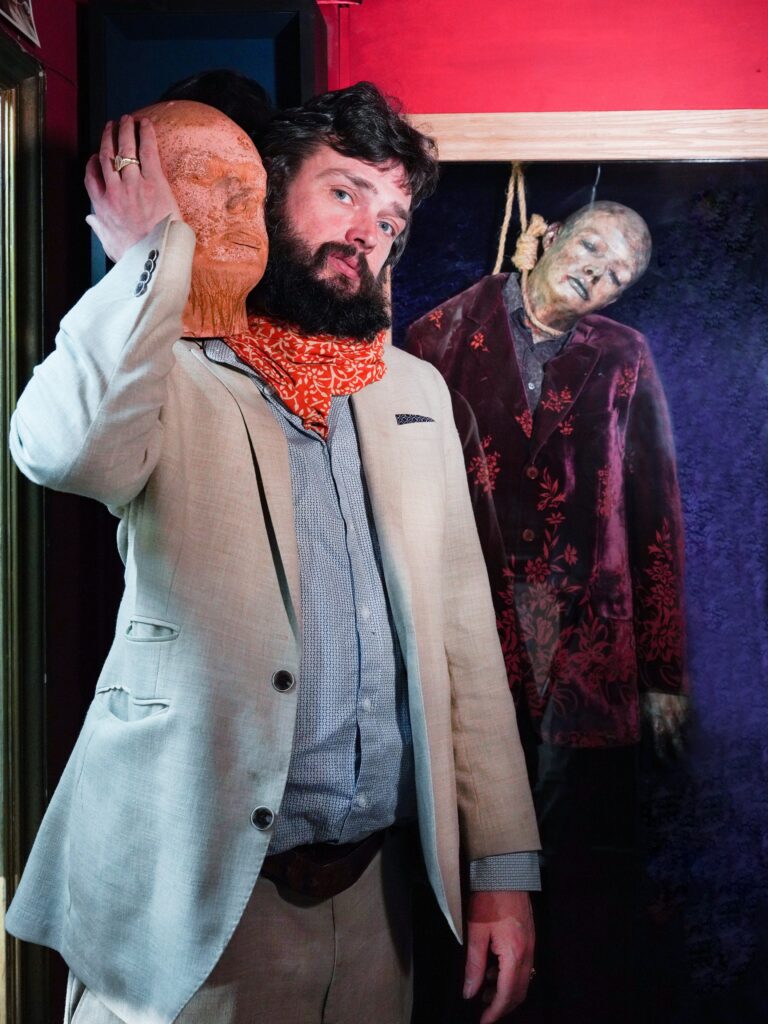
© Viktor Wynd Museum
Over his career, Viktor has done so many things – it’s nuts. Some of these things include: 500+ literary salons, tonnes of exhibitions, séances, and fantastical parties that attract thousands of guests. A very impressive CV!
The Last Tuesday Society
The artist collective founded by Viktor, The Last Tuesday Society, is an ‘interdisciplinary art movement’. Its main focus is in relational aesthetics – art related to human relations and their wider social contexts. Now, I’m not a historian so definitely read up on this more if you’re interested.
Viktor Wynd Museum was a collective effort between the man himself and the Last Tuesday Society. Originally, it was your bog-standard ‘little shop of horrors’, selling curios and object d’art. From there, things kind of snowballed. According to the website, Viktor Wynd ‘actively began buying, stealing, borrowing & begging an ever larger amount of objects’ to add to the premises.
Eventually, it was decided to display Viktor’s collection in a Wunderkammer (German: literally ‘room of wonder’, usually translated to ‘cabinet of curiosities’ in English). The museum premises were funded with a Kickstarter campaign, so cheers to all of the cool people who made the opening of the place possible!
In short, the Viktor Wynd Museum is essentially a place to showcase all of the weird and wonderful things he’s collected over his lifetime. And god what a weird collection it is.
An Unassuming Street
I went in to the museum not knowing anything really about the artist, or about the museum itself. I find that going into places blind is often the best way to do it, though.

The building housing the Last Tuesday Society absinthe bar and the Viktor Wynd museum itself is in a really unassuming shopping street in Hackney. You could walk right past if you’re not actively looking for it.
On peering closer, though, you can instantly recognise it by the human specimens, gnomes, and rows of Devil’s Botany absinthe bottles adorning the window.
Experts in Absinthe
Allison Crawbuck and Rhys Everett, the founders of Devil’s Botany, have trotted the globe searching for absinthe varieties and learning everything they can about the mysterious, oft-misunderstood spirit. Their distillery in Walthamstow is the first dedicated absinthe distillery in the UK!
These two are responsible for the setting up of the cocktail bar at The Last Tuesday Society. Here, they concoct perfectly-balanced absinthe-based drinks for patrons. The bar was established in 2016 and has won the Design My Night award for Best Bar in London!
Allison and Rhys clearly know what they’re doing and are real connoisseurs of absinthe. They’re also so cool and interesting.

When I shambled into the Last Tuesday Society, I was greeted warmly by the barkeep. After I explained I had a booking for the Viktor Wynd Museum, he suggested that I peruse the absinthe menu before going downstairs. Apparently, having a sniff of an absinthe cocktail to accompany you is recommended for added mood and weirdness.
In the end, I opted for an Absinthe Regalis Old-Fashioned, containing Devil’s Botany absinthe regalis, simple syrup, and angostura bitters. I was a little apprehensive about having absinthe again. My last experience had been when I accidentally inhaled a shot of it in uni. But this cocktail was very pleasant and went down nicely.
To the Cellar
To access the museum proper, you have to make a treacherous descent down a very tightly-spiralling, steep metal staircase. The potential neck-breaking fall actually made me more keenly anticipate what I would find down there. Trying to balance your glass of absinthe and hobble down the stairs like a new-born giraffe is quite an experience.
Viktor’s collection is stuffed down there in the basement, in a few small rooms. It’s very tight down there as the rooms are packed with things, so heads up if you’re a bit claustro. Luckily, I was alone for most of my visit (the rest of the time there was only one other girl), so it was easier to move around and get a decent look at everything.
Skulls (and a Head)
Once you reach the bottom of the stairs, you’re instantly greeted with glass-fronted niches in the walls. These niches are just packed with stuff. I think there was initially an attempt at organising the objects into categories, but it got more and more random the closer I looked.
Some of the things I observed in the first case: a couple of Kokeshi dolls, tribal statues and masks, what looks like the Creature of the Black Lagoon’s head mounted on a plaque like a hunting trophy, a very cute doll with an alien-like mouth, many animal skulls, and a severed head on a plate (which I assume is supposed to be Viktor Wynd himself). Have a look at the photo and see what you can spot!
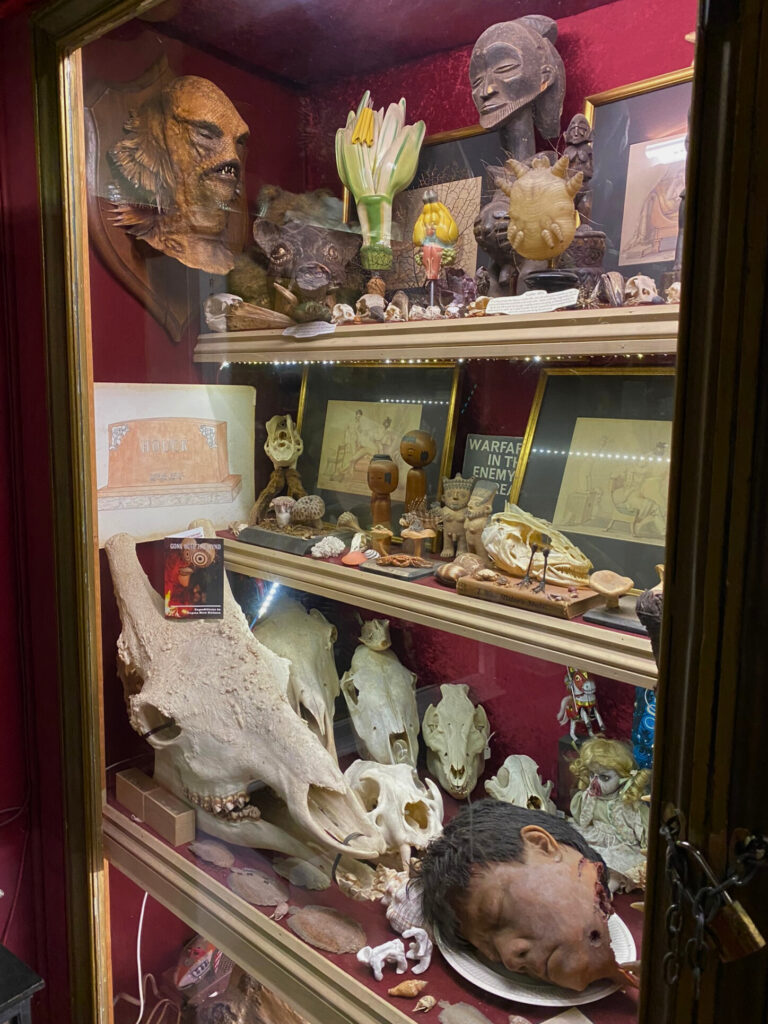
Things in Jars
I’m a huge fan of things in jars. Plants in jars, insects in jars, jam, dead humans and animals in jars, honey, etc. Things. In. Jars.
So I was delighted when I found the ‘Cabinet of Monsters’ in the Viktor Wynd Museum. Inside, there were several wet specimens (in jars!!) – including conjoined piglets and another piglet without a face. An eight-legged lamb sits on the bottom shelf in a tangle of its own limbs, and there are other specimens with too many legs or faces. I also spied a photograph of conjoined human twins and some Biblical art, for no reason.
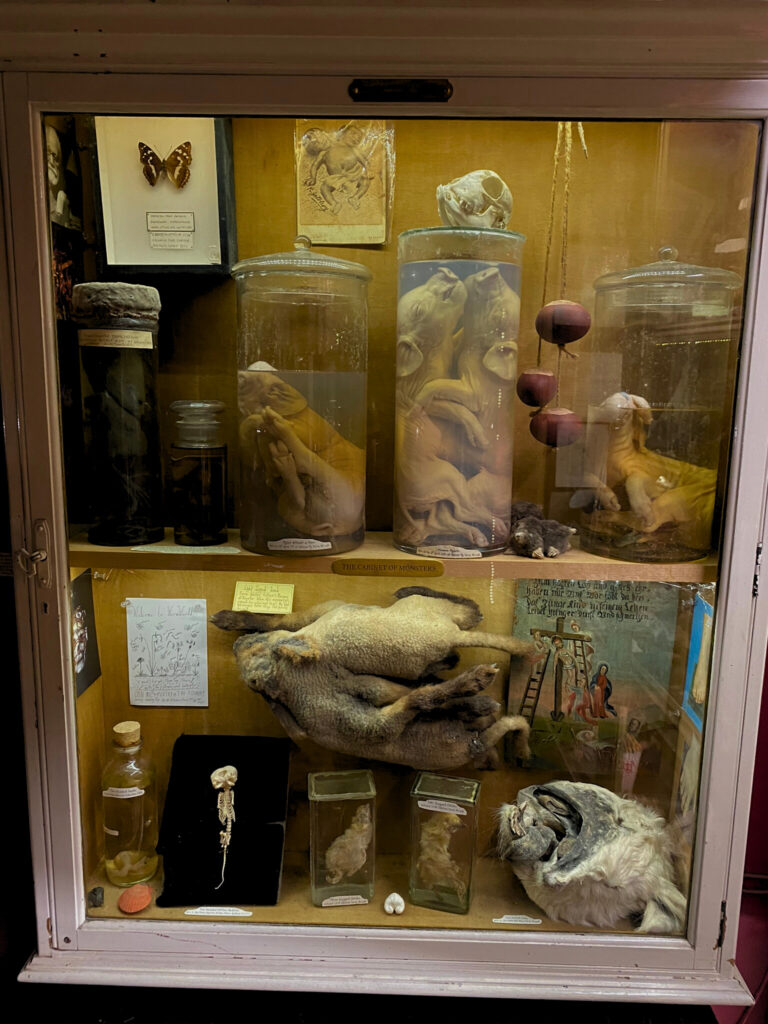
There is also a two-headed lamb who I love:
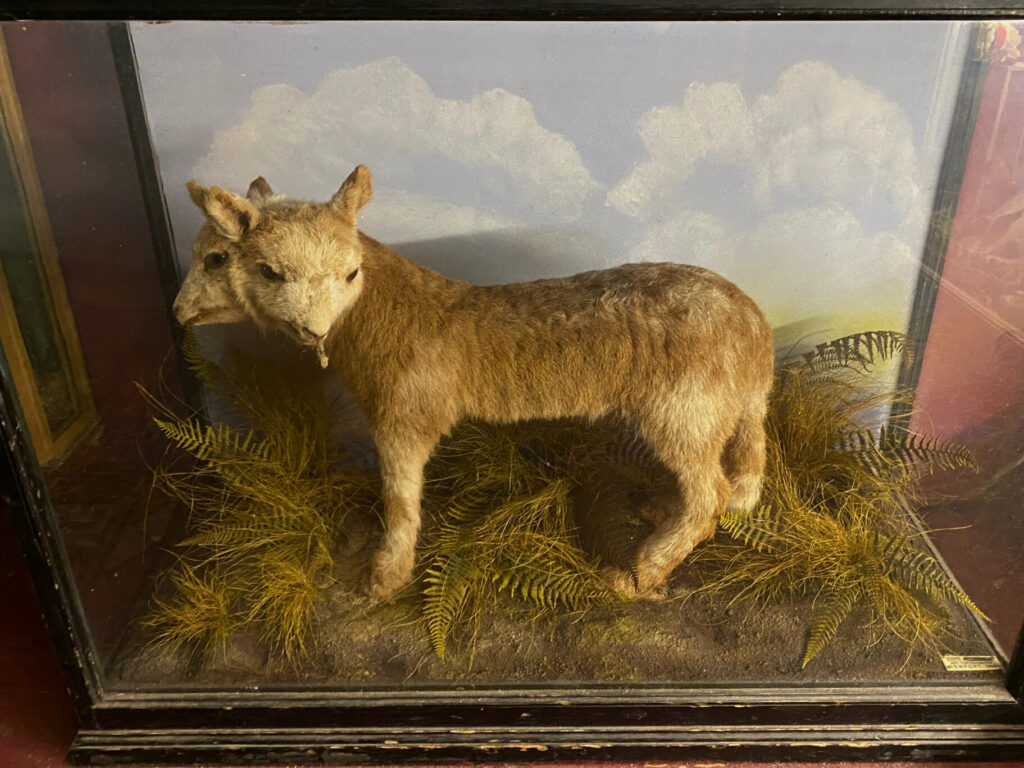
Hair Art & Disease
I might have mentioned it before, but I’m a huge fan of Victorian mourning art. In particular, I love the hair art – be it in a frame or incorporated into jewellery.
So I was immediately drawn in by some really lovely pieces in the Viktor Wynd Museum. It was interesting to see the different art styles that were achieved using hair. Some parts were thin, wispy, and delicate. Other parts were thick braids and loops. This is exactly the sort of thing I’d love to have in my own home one day, if I can ever afford it.

In the bottom-left corner of the case in the photo above, you’ll see a jar of…. What is that, exactly?
The letter behind the jar claims to be from a Maria de Silva, a maid at The Hill Club. In 2003, she says, she had to clean a room that The Rolling Stones had been staying in. The jar that accompanied the letter is full of (presumably used) condoms and their wrappers. Next to the jar is a Viagra box that Ms de Silva also claimed came from the Stones’ room.
I cannot imagine how much pestilence is contained in that jar, yiiiiiiiikes.
Some simple hilarity occurred when I read a nondescript A4 piece of paper in the display case. On it, in simple block capitals, was printed “Smile if you had sex last night”. So cheeky and clever, as it instantly raised a smirk of amusement from me (and, I imagine, everyone) so I looked incredibly guilty. Perfectly executed prank, tbh. Luckily for me, no one else was downstairs at the time.
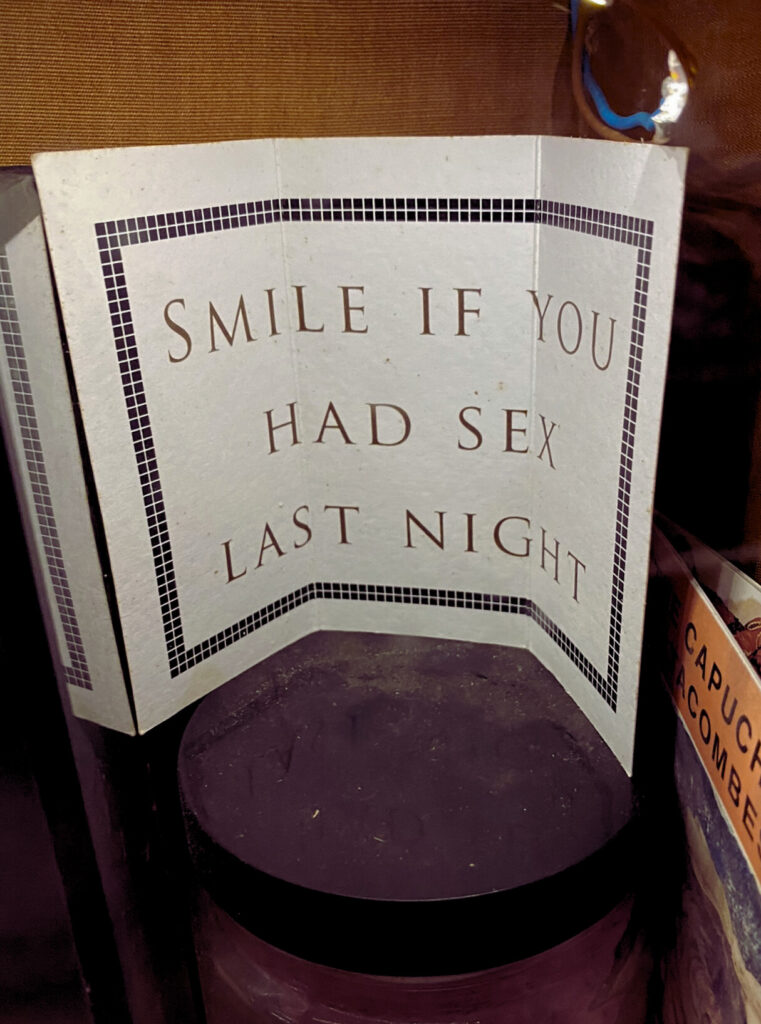
Finally, the two other things that caught my eye were a mummified child, and a mummified heart with thick old nails sticking out of it. Intriguing!
Drinking with a Skeleton
The museum abruptly ends with a small room that has been turned into a seating area. Velvet booth benches line the walls on either side of a big wooden table. The table has a niche in the middle with a glass top, and inside is a skeleton.
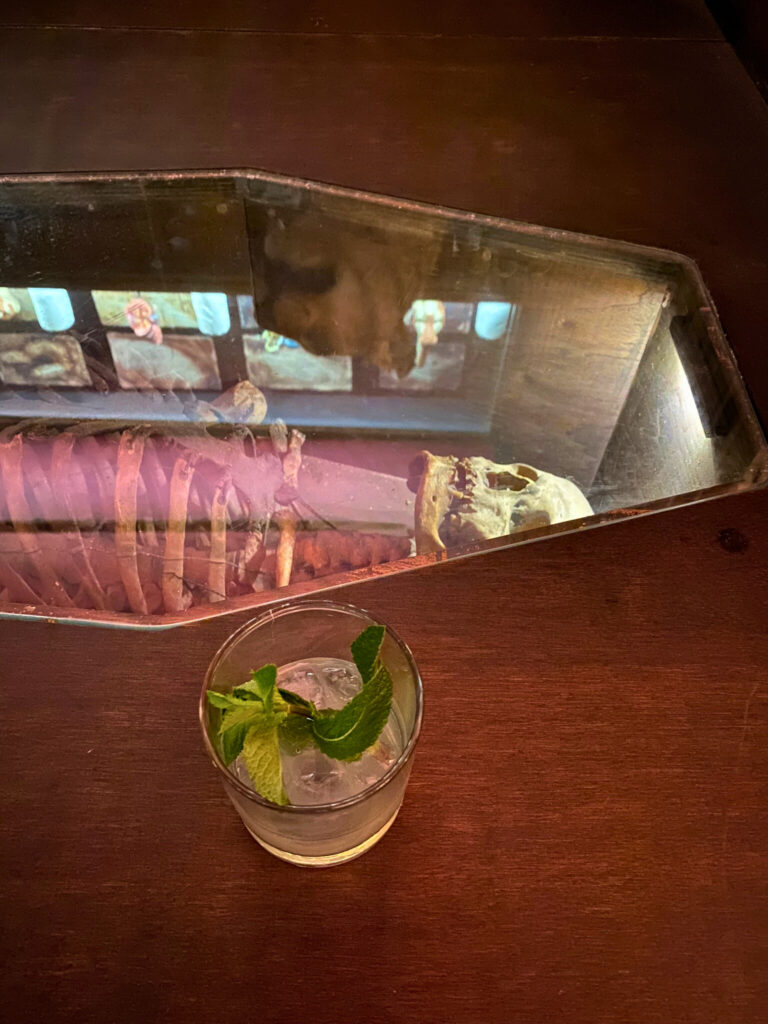
Now, I can’t actually find any information about who the skeleton was. All I could work out is that it’s apparently from the 19th century. There was a plaque on the table that I assumed would enlighten me – instead it informed me that a Morgana Gwyneth White was conceived on that very table back in 2006. Charming!
Shuffling into one of the benches at the table, I said hello to the skeleton and notified them that I planned to sit and drink for a while. It was quite pleasant, just perching there with a glassful of absinthe, surrounded by the weird and wonderful collection.
Across the table from me sat an enormous lioness, in a regal posture with glaring, wild eyes. She was taxidermy, not live (which would’ve been infinitely better, of course), but she was stunning.
My other favourite bits of this room were the skeleton behind bars next to me, the mummified ‘merman’ mounted up on the ceiling, and the light that was made up of seven boobs. Every time I think I’m a mature adult, something like this happens and makes me titter (pun fully intended).

On reading more, I’ve learned that this room is called the Sarcophagus Chamber, and you can actually hire it out for gatherings!
My Highlights
It was so hard to narrow down all of the amazing items in the museum, but I had to try. Otherwise this blog post would be 50k words and there would be no point in you going to see it as I’d have mentioned everything.
Having said that, I don’t think I’ve even seen everything in there. There is simply too much for your eye to take in on one visit. In any case, here are my faves:
A Survivor’s Misfortune
I think my absolute favourite thing in the Viktor Wynd museum was a long, ash-blonde plait in a box frame. The hair is thick and pretty, and immediately drew my eye. Reading the label, which was handwritten on a lovely embossed card, I learned that the hair belonged to an Iris Godwin. She supposedly survived the Titanic sinking, only to perish 7 years later in the ‘Spanish’ flu pandemic. Tight.
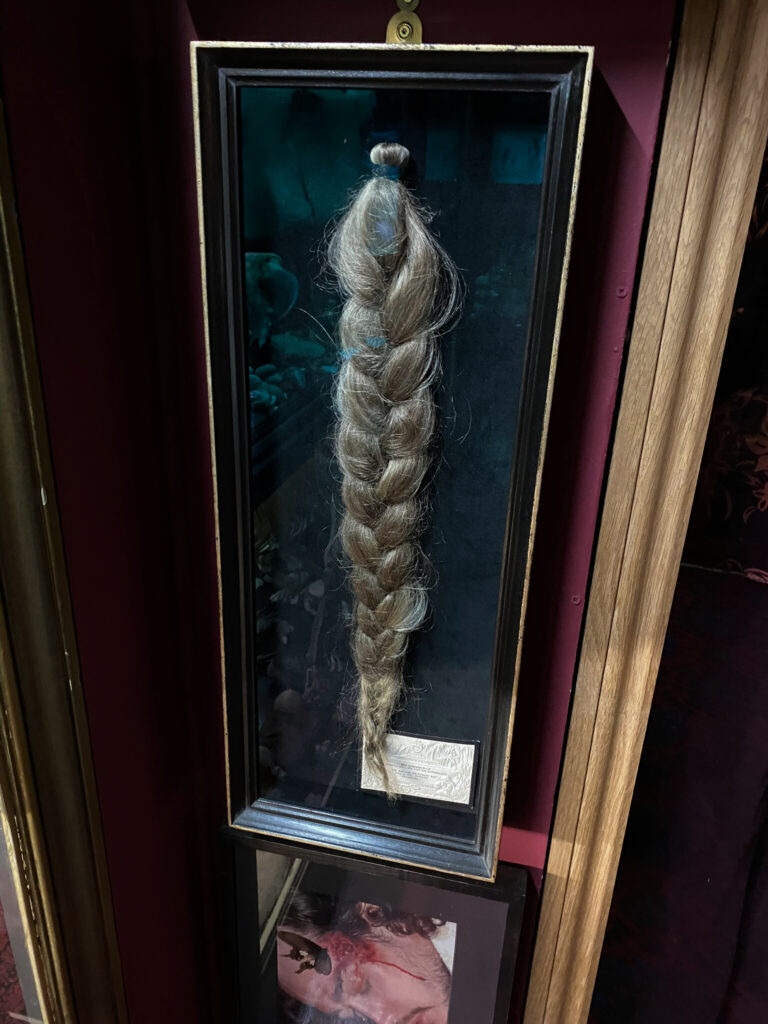
After a rudimentary search, I couldn’t find any record of an ‘Iris Godwin’ on Titanic survivor lists. Her birthday is written on the label as April 1, so I wonder if the whole description is just Viktor’s imagination or a joke. Whatever the case, the hair is still a very pretty addition to the Wunderkammer.
You can find Iris’ hair easily in the museum – just look for the life-size sculpture of Viktor Wynd hanging from a noose!
Starman’s Biscuit
Apparently David Bowie visited the Viktor Wynd Museum for the first time back in 2011. While there, Mr Bowie enjoyed a lovely biscuit as he relaxed and socialised. All he left behind were his crumbs, which Viktor promptly put in a silk-lined box frame and exhibited (with a handwritten note explaining what they were).
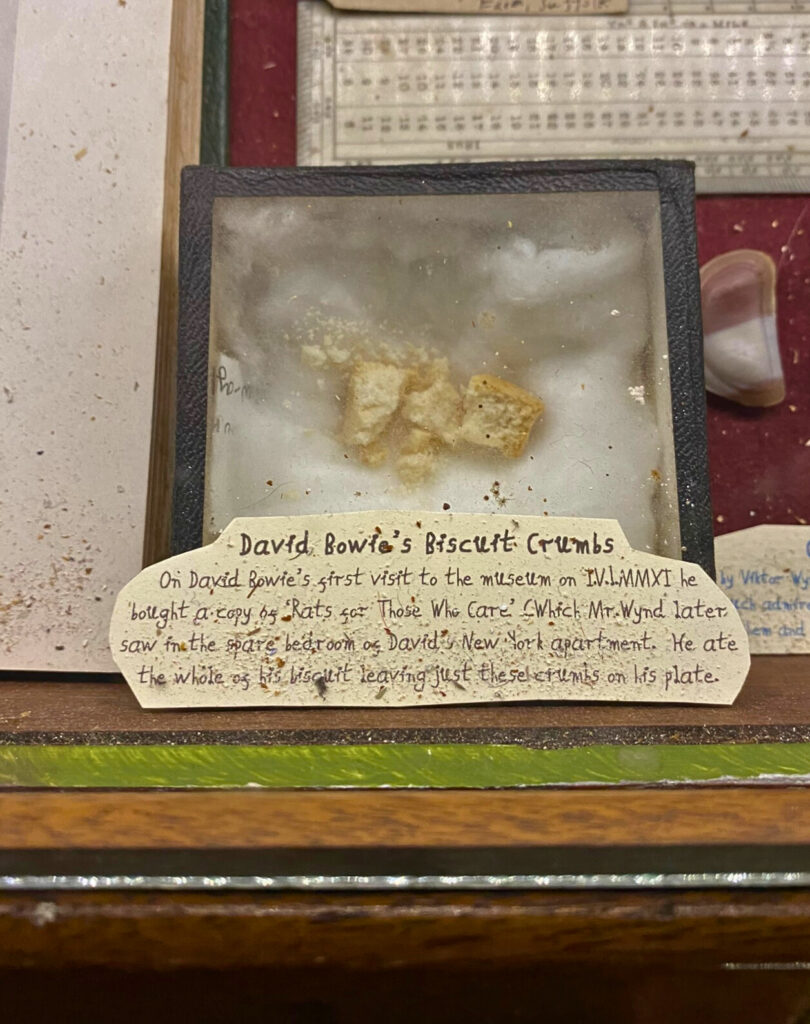
From far away, I thought they were exceptionally large wisdom teeth or something. Which wouldn’t have been surprising, to be honest. I had to get closer to see the label, and then laughed aloud. No other museum in the world has some crumbs from David Bowie’s biscuit in their collection, I’d wager.
Little Lives & Party Animals
Scattered throughout the first part of the Viktor Wynd Museum were little dioramas featuring small taxidermy animals (mostly birds). They were created by artist Lisa Lindqvist under her alias Katarina Rose, and they’re very charming.
My favourite of the dioramas was Dr Love. He’s a little bird (maybe a yellow wagtail? Please correct me if I’m wrong!) who has what looks like an apothecary. If you read the label on the bottles, they’re all bottled essences of love. Some examples are Mother’s Love, Hope (very sweet), and Passion. Dr Love deals in giving his customers the warm fuzzies they prefer.
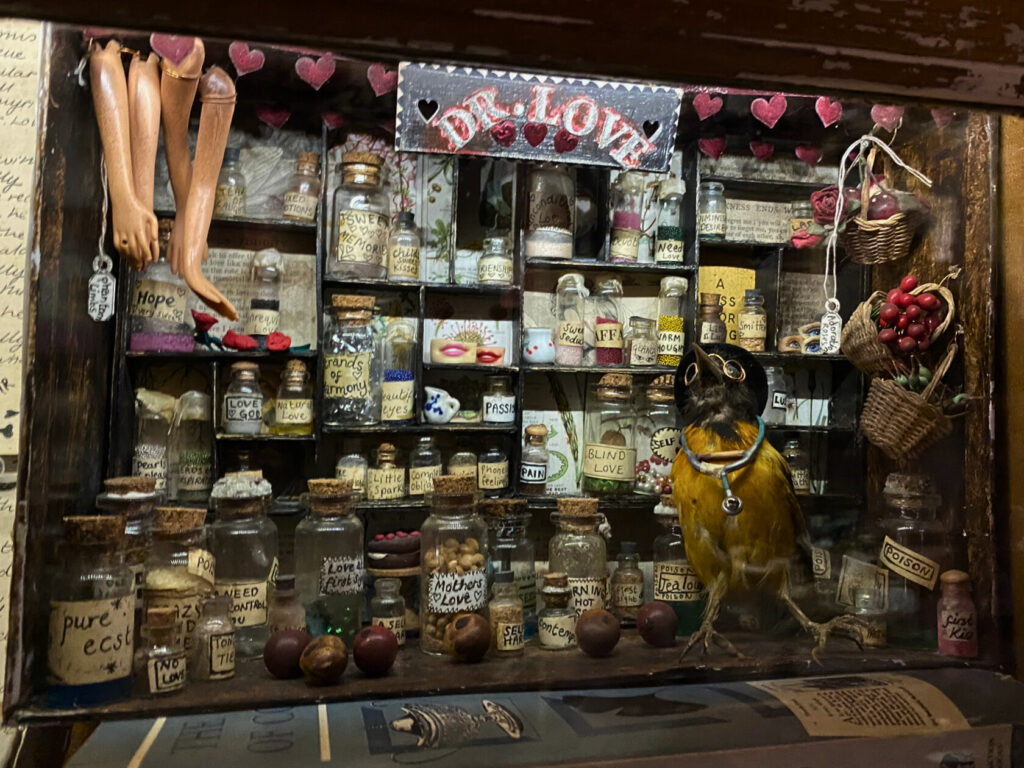
However, you’ll also notice bottles labelled with things like Pain, Self Harm, and Contempt. According to Lisa Lindqvist’s site, Dr Love struggles with a particularly evil streak that manifests by lashing out at his customers and giving them bad feelings instead of good ones. Though he is deeply ashamed of these actions, the doctor feels powerless to stop it.
….Why am I now emotionally invested in this small taxidermy bird’s life and personality!?
There is also plenty of BIG taxidermy at Viktor Wynd. Several of these are dressed to the nines, sitting around the so-called ‘Devil’s Table’ with Occult paraphernalia displayed around them. I confess I don’t know much more as I found them a little unnerving. Maybe I’ll meet them properly next time.

Dolls from the Grave
These supposedly-magic Peruvian dolls are between 600 and 1500 years old. From the reading I did post-visit, they appear to be from the Chancay people. The Chancay were a small pre-colonial civilisation who existed during the tail-end of the Incan empire.
Viktor’s label says that his dolls are pre-Columbian and that they were ‘often found in graves’, which tracks with my background research. Apparently the Chancays used to make these dolls and bury them with recently deceased people. It’s not really known why this was practiced, or how it started.
Historians believe the dolls were made to represent real people (maybe the one buried with ‘em?). The dolls are distinctly people-y, rather than looking like spirits or gods. But all any of us can do is speculate, as the true reason has been lost to time.

Anyway, that’s about the extent of my rudimentary historical research. To me, these dolls are lovely, made from durable, quality materials and what appears to be a lot of love. All of the patterns and embroidering are so pretty. Every stitch was hand-sewn, every fibre dyed with natural colours, and every pattern painted with skill and care.
I was completely enamoured by the magic Peruvian dolls, and spent a long time staring at them. Honestly, I can’t quite believe how well they’ve held up considering their age.
A Felon’s Skull
John Parker was 36-years-old when he was hanged at Gloucester jail in 1813. He’d been done for stealing from a Bristol church. I’m unsure if all theft potentially carried the death penalty back then, or if Parker was a special case because church theft seemed more gross? Anyway, he was hanged and the case was closed.
Quite how John Parker’s skull became separated from the rest of his body and landed in a Sussex auction house, I don’t really know. Considering when he was executed, it’s assumed that he didn’t plan to donate his body. He was almost certainly liberated from his grave by ‘resurrectionists’ (the kind way to say grave robbers), dissected, and then sold to surgeons, scholars, and medical students.

Backing this theory up is the fact that sections of Parker’s skull were cut away in a way that suggests it was used as an anatomical model at some point over the last couple of centuries.
Unlike the dubious provenance of Iris Godwin’s hair, this is a legit curio. I double-checked the details, and found the articles from when the skull was purchased, presumably by Viktor Wynd. The auction house commented that there was one person who was ‘seriously interested’ in buying the skull, so I’m inclined to believe that that was our guy.
The Most Unappealing Chocolate
For me, the funniest, most random bit of the whole museum was something quite small: an uneaten chocolate lolly in the shape of former Prime Minister John Major. It was so random and unexpected that I laughed out loud.
Chocolate Mr Major is in pretty terrible shape now, but he caught me so off-guard. Every time I look at this awful photo of it I have another chuckle to myself.

The Collection Continued
I know I’ve talked about a lot of the things in the Viktor Wynd museum, but I promise I haven’t spoiled the whole thing. There is so much more for you to see! Here’s a little list to whet your appetite:
- Curios
- Weird sex stuff
- Magick & Occult items
- Tiny, tiny foetus parts
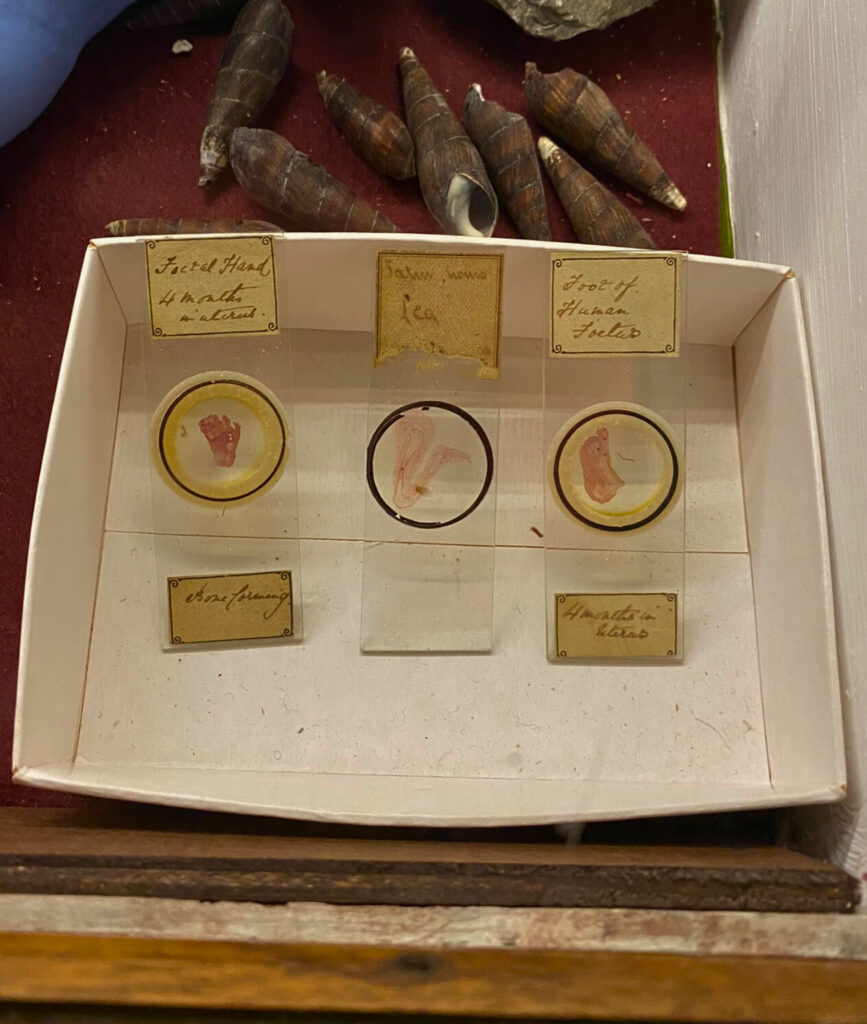
- Body parts and bones
- Insect specimens
- The gold-plated hippo skull that belonged to Pablo Escobar
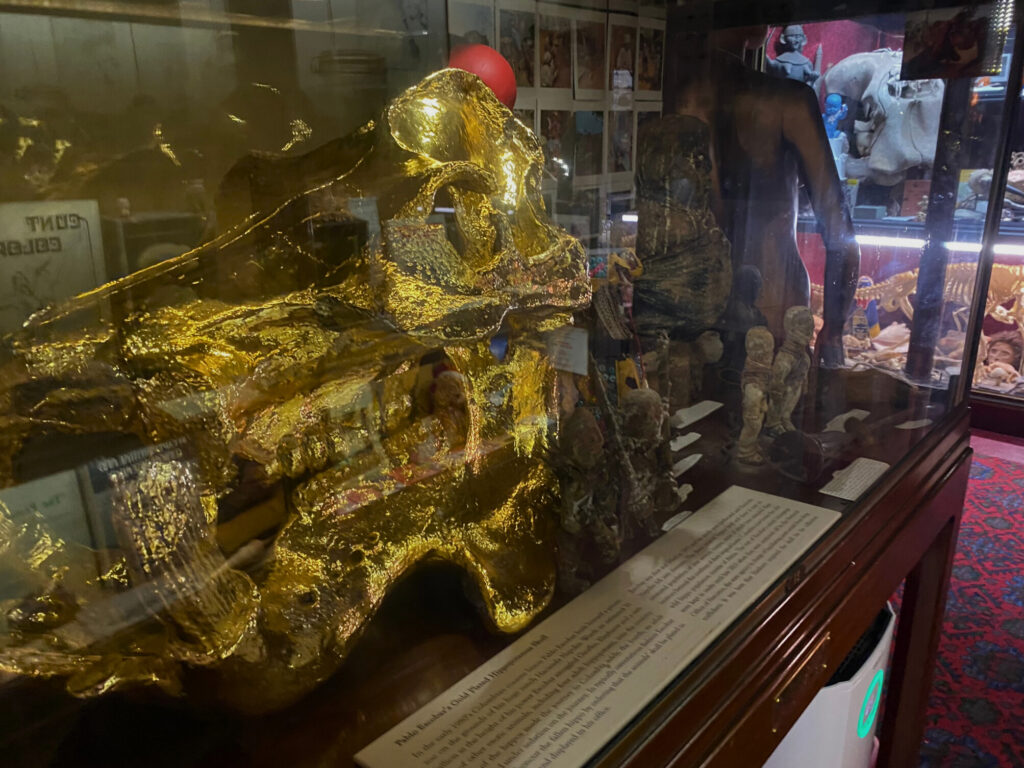
- Viktor Wynd’s own dead pets
- Dead animals and skeletons from all over
- Fairies, a cyclops skull (which I’m pretty sure is actually an elephant skull), and merpeople
- The Pamela Anderson and Paul Robeson reunification cake – made by artist Magnus Irvin, I still don’t really understand why it was made. It used to be mostly black and white and now it’s a horrifying, decaying mess of sponge and fondant.

On top of everything else, there are a lot of Viktor Wynd’s own pieces of art. Personally, I really enjoyed his work from the series The Sorrows of Young Wynd. In this, Viktor created sculptures, paintings, drawings, and photography of himself committing suicide in various ways. I found this incredibly interesting and morbid. Maybe even relatable. He has a lot of these artworks, and I’m almost certain he was inspired by Goethe’s controversial book, Die Leiden des Jungen Werthers.
“Being alive is a terribly sad and miserable experience. There are little chinks of happiness and joy that light up an otherwise dark world. But we are all miserable, aren’t we?” – Viktor Wynd
How they fit so many interesting things in such a small space is beyond me. It’s like an Aladdin’s cave of absolute lunacy. I enjoyed it very much indeed. Viktor Wynd really has been everywhere around the world, creating such a wild cornucopia of STUFF.
You could seriously spend a whole day trying to spot every tiny item crammed in there. I’ll definitely have to go back to see what else I can find.

Souvenirs & The Exhibition
If you know me at all, you’ll know that I can’t resist a good souvenir. From the Viktor Wynd Museum I got a poster print of this art, which shows a lot of the categories included in the museum’s collection. I also got a little badge with this design on it.
For a long while, I agonised over a pufferfish skeleton – the segments are so intricate! – but in the end I decided it’d get smashed to smithereens in my coffin on the way home.

On the day I visited, Viktor Wynd Museum had just introduced a new exhibition (that I believe is now a permanent fixture): A Beastiary of Austin Osman Spare. I don’t recall seeing any of Spare’s work, though I can be forgiven for not seeing it amongst the vast collection. Maybe it was housed in the actual bar area, at the back. I didn’t look over there properly as there were people sitting and having a drink. I didn’t want to be, like, looming over them.

© Austin Spare
Quite gutted that I didn’t see the exhibit (though I did buy a programme!), as I learned an interesting story about A.O. Spare. During the war, Spare was allegedly approached by Hitler, perhaps via the German embassy, to ask that he paint a portrait of the Fuhrer. Mr Spare declined on principle (based).
After the worst night of the Blitz, 10 May 1941, Spare’s studio was one of the buildings stricken by the bombing, losing hundreds of precious portraits and other works. Austin Osman Spare called this ‘Hitler’s Revenge’.
That’s not the only weird thing that happened in Spare’s life. He was also really into the Occult and developed automatic writing and drawing skills. His artwork is seriously varied and interesting. I feel like I can’t do him justice in a short segment on here, so go and read about him, it’s nuts!
Visiting Viktor
Of course you all want to go to the Viktor Wynd Museum now that you’ve read my awesome account of it. But just to twist your arm more, you can get a good taste of what’s inside by checking out the Collections page on the museum’s website. It goes into lots of detail about some of the cool things they have, so definitely browse. The museum also has a YouTube channel and on-demand zoom lectures for your enjoyment!
There are always great exhibitions and events going on at Viktor Wynd, so keep your peepers on their website for upcoming insanity. There are regular personal tours of the museum with Viktor himself, which I really want to do ASAP – I’d love to pick his brain about some of the pieces in the collection!

For any parents reading, children under 18 are allowed in the venue, but only until 5pm and they have to be accompanied by a parent or guardian. I’ll be honest, I don’t know how appropriate Viktor Wynd is for kids! There is a lot of adult content and stuff that might be a bit awkward to explain to a child, but that’s up to you guys (people who are actually parents).
Further, I’d also advise not bringing your really religious grandma. Or anyone who is sensitive, squeamish, or easily offended.
Away with the Fairies
Viktor Wynd even heads up amazing expeditions, in which he’ll take a group of people to crazy locations to scope out nature, local food and drink, and traditional ceremonies.
Currently, there are nine upcoming expeditions being advertised including Voodoo ceremonies in Benin, orangutans in Borneo, and a wild trip to the Peruvian Amazon! How incredible!?
These expeditions are called ‘Gone with the Wynd’ (hahahaha MAN, I love puns).

The Viktor Wynd Museum is very cool, and very weird. I will definitely go back to look at the collection again, and try to catch a private tour or event!
Have you been to the Viktor Wynd Museum? What was your favourite part? Leave a comment and tell me about your experience!
Share this post with your weird friends. You know, the ones that you love but are a little bit afraid of. This place will definitely be their kind of thing.
